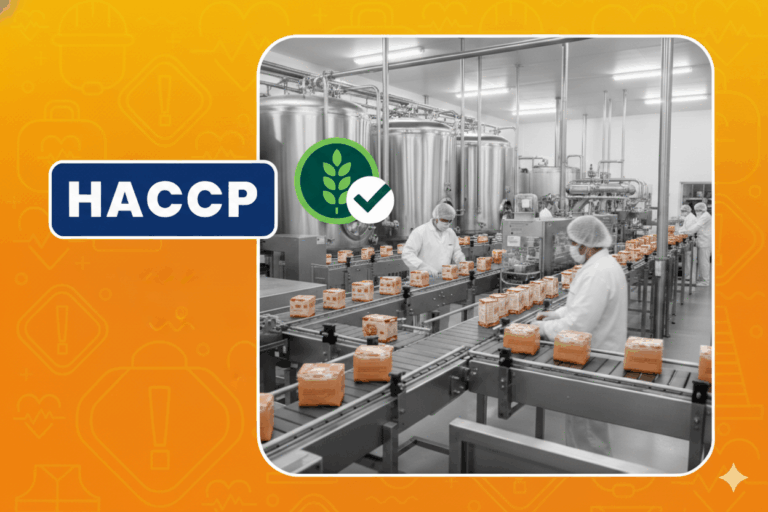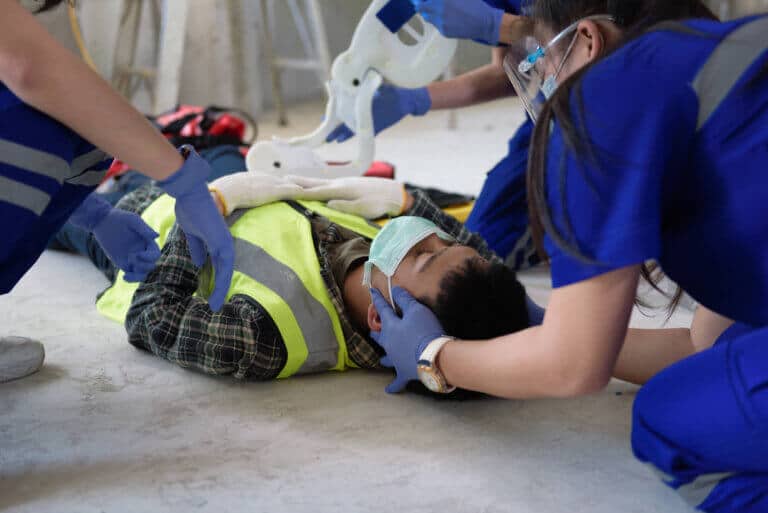Safety showers are vital to mitigate the effects of exposure to polluting substances, especially skin and eye burns caused by corrosive liquids, abrasive dust or polluting gases, among other common risks in industrial and extractive operations.
One of the key factors for the competitive development of companies is safety, both for personnel and for the different operations daily carried out at their facilities. This implies optimizing and maximizing the prevention of occupational accidents and illnesses, especially when we are working in direct contact with risk inputs and hazardous substances.
Within this scenario, one of the main causes of serious accidents is exposure to chemical elements present in the environment, such as caustic, corrosive or poisonous substances.
This type of unforeseen event usually occurs in industrial environments, construction sites, or mineral extraction operations, and its consequences are very serious for workers, even when they use clothing or protective elements such as shoes, gloves, helmets, and goggles.
For this reason, together with prevention, it is also essential to use security systems that allow us to adequately deal with the consequences of an accident of these characteristics. Especially during the first vital 10 to 15 seconds after exposure.
Two essential elements within any safety strategy are emergency showers and eyewash fountains, which effectively contribute to minimizing the effects of accidental exposure to chemical products, especially acids or corrosive gases.
Why is it so important to have safety showers?
There is a large number of productive, industrial, extractive and natural resource exploitation activities that share common risks of a chemical nature. These include situations such as spills, splashes of substances, projection of particles and exposure to chemical powders of various kinds.
Although all these accidents can seriously damage the skin and eyes of workers, events involving corrosive chemical agents are particularly serious (such as acid burns in mining and some industrial activities), because they involve the destruction of body cells and molecules.
The severity of these burns will depend on the type of chemical and its concentration, as well as the temperature of the product and the time it is in contact with the skin. In fact, the damage suffered by the tissues as a result of a chemical burn does not stop until the product is neutralized, so the most urgent and important palliative measure, after contact or splash, is washing with abundant water.
In this way, emergency showers and eyewashes are the first line of aid in the event of an accident of these characteristics, because they instantly offer the enough flow of water necessary to positive neutralize the effect of a burn of this type.
Which activities should these systems have?
International legislation establishes that emergency showers are mandatory for all those companies that handle or store a high amount of hazardous waste (such as acids, chemical agents, corrosives or pollutants) on a daily basis.
In the case of Chile, Supreme Decree number 43 of the Ministry of Health establishes, in its article 31, that “all common warehouses that store over six tons of dangerous substances must have an Emergency Shower and Eyewash”.
Article 61 of the same legal text determines that “there must be emergency showers and eyewashes no more than 20 meters from the loading/unloading doors, either inside or outside the warehouse, and 10 meters from the sampling area of ponds, which are inside a warehouse, with a sufficient flow rate to ensure the runoff of the substance to be cleaned”.
In the case of bulk storage activities, Chilean legislation requires that “there must be emergency showers and eyewashes outside the containment tank, no more than 10 meters from the sampling area, or loading and unloading area, liquid or solid tanks, or the perimeter of the bulk pile, as appropriate, with a sufficient flow rate to ensure the runoff of the substances to be cleaned”.
The right way to use safety showers
As with firefighting equipment or evacuation routes, safety showers and eyewash fountains should be installed in easily accessible locations in order to they can be used quickly in an emergency.
In the same way, it is essential to have them in those areas where there is a greater probability that workers will suffer injuries caused by chemical powders, corrosive liquids, toxic gases, vapors or lacerating and poisonous particles.
Efficient safety showers must provide enough water flow to completely soak a person in less than 10 seconds. In these cases, international experts recommend that the equipment deliver a minimum flow of 114 liters per minute of running water, for at least 15 minutes.
It must also be ensured that the water is not cold (preferably between 20° and 35°), and that the injured worker remains under the stream of water while removing all contaminated clothing. After this, he must remain in the same position for at least another 10 minutes, in order to ensure that the contaminant is completely removed.
In the case of individual eyewash fountains, these must basically consist of a 25 to 35 cm basin with its corresponding drain, a system for fixing it to the floor or to the wall, an actuator and two sprinklers capable of providing a jet of drinking water, totally clean (transparent) and with a neutral ph.
The shower actuation system must be easy, fast and as accessible of use as possible. Specially because the injured worker could be not be able to use their eyes. For this, the experts suggest a triangular handle attached to a fixed bar, which could be activated by a single movement. Other useful systems are a chain or a bottom pedal (also suitable for stand-alone eyewash fountains).
The water sprinkler must have a head of at least 20 cm in diameter and have large holes, to prevent them from becoming easily clogged due to the presence of lime or rust deposits.
It is also convenient that the safety shower has a drain to avoid the formation of puddles that can cause personnel to fall, or damage to other equipment that is nearby.
In the same way, it is convenient to keep in mind that there are certain products that react violently or generate dangerous residues in contact with water. Therefore, these must be conveniently labeled and located in places far from emergency showers and eyewashes.
Likewise, an acoustic or visual alarm device must be installed in the nearby areas (for example, a siren and an oscillating strobe light), which start instantly when the shower is activated. Therefore, the rest of the staff and the emergency teams will find out that there was an accident, and they will be able to provide help to the injured person.
General tips
Along with these particular considerations, it is advisable that the company’s hygiene and safety committee, as well as the supervisors in charge, adopt other complementary measures, such as follows:
- Determine who will be responsible for educating workers on the use of emergency showers, as well as defining the strategies that help reduce the exposure of workers to risk scenarios that represent a danger to their health.
- Establish and apply a constant control program to verify the correct operation of the shower and the eyewash, as well as the water supply, on a daily basis. This implies carrying out periodic preventive maintenance of the state of pipes, valves, stopcocks, drains and water flow. At this point, Apps and digital checklist solutions can be used to properly and safely review all the necessary items.
- Adequate signaling of these security elements, as well as informing and educating staff on their correct use. This implies knowing the location of the mixed shower and the eyewash fountain, understanding how they work, knowing what first aid should be given next, and knowing the most appropriate decontamination methods to act assertively in an emergency of this type.
At the same time, it must always be borne in mind that these decontamination systems do not replace or eliminate the other usual protection measures; and that it is essential to comply with all basic hygiene and safety standards to properly protect the life and health of workers.
Download the DataScope app and start now!
DataScope is the ideal tool to eliminate paper use, save time, and efficiently collect data from the field. It allows companies to streamline, organize and evaluate field work thanks to its online forms, which provide indicators in real time, 100% adaptable to any area.
With DataScope, your team can answer custom mobile forms from their phones or tablets, online or offline, through the app.






